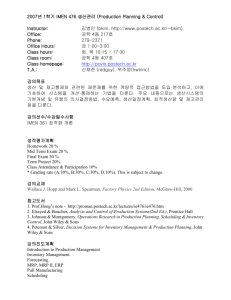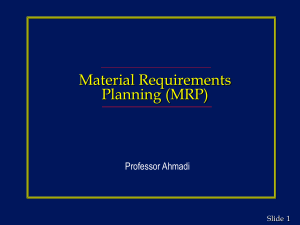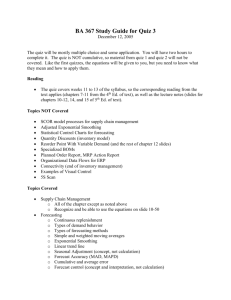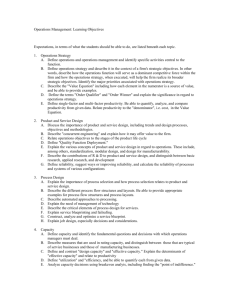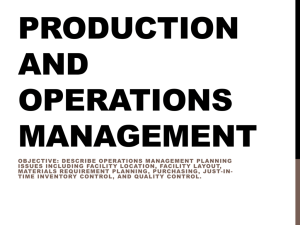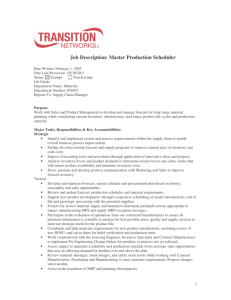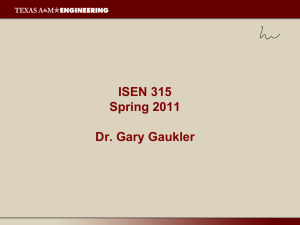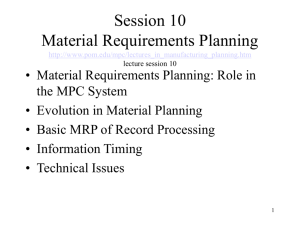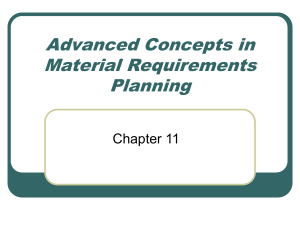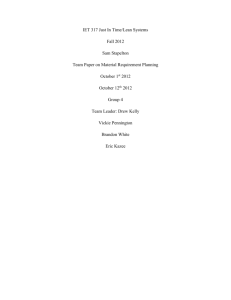OMIS 430 - Exam 3 Review
advertisement
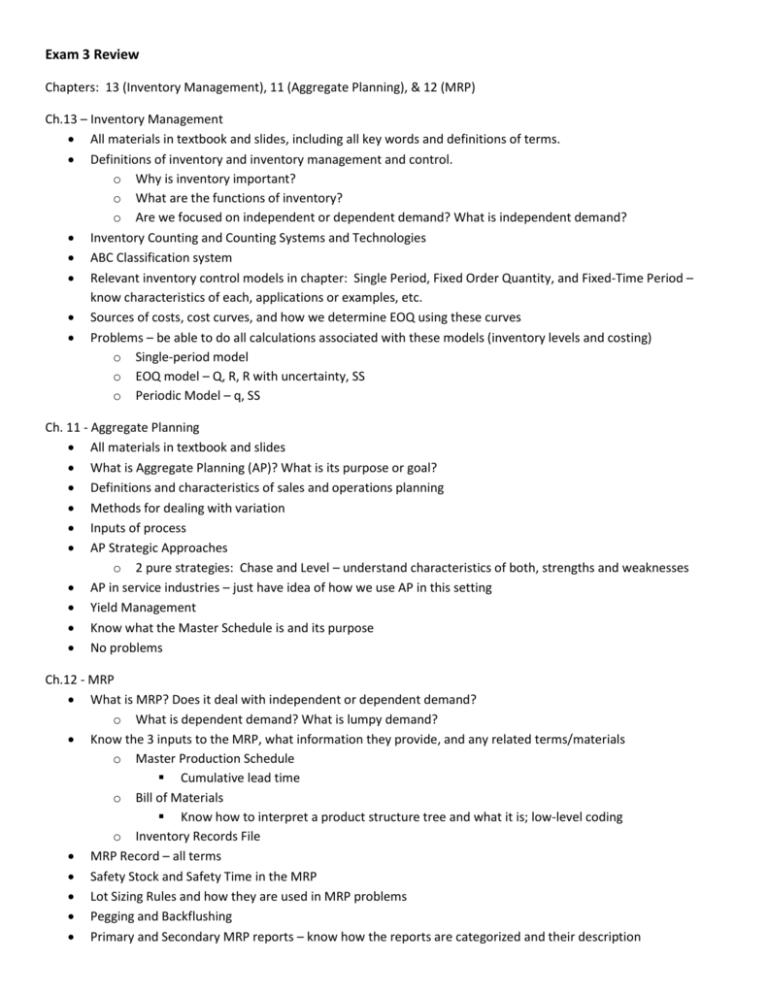
Exam 3 Review Chapters: 13 (Inventory Management), 11 (Aggregate Planning), & 12 (MRP) Ch.13 – Inventory Management All materials in textbook and slides, including all key words and definitions of terms. Definitions of inventory and inventory management and control. o Why is inventory important? o What are the functions of inventory? o Are we focused on independent or dependent demand? What is independent demand? Inventory Counting and Counting Systems and Technologies ABC Classification system Relevant inventory control models in chapter: Single Period, Fixed Order Quantity, and Fixed-Time Period – know characteristics of each, applications or examples, etc. Sources of costs, cost curves, and how we determine EOQ using these curves Problems – be able to do all calculations associated with these models (inventory levels and costing) o Single-period model o EOQ model – Q, R, R with uncertainty, SS o Periodic Model – q, SS Ch. 11 - Aggregate Planning All materials in textbook and slides What is Aggregate Planning (AP)? What is its purpose or goal? Definitions and characteristics of sales and operations planning Methods for dealing with variation Inputs of process AP Strategic Approaches o 2 pure strategies: Chase and Level – understand characteristics of both, strengths and weaknesses AP in service industries – just have idea of how we use AP in this setting Yield Management Know what the Master Schedule is and its purpose No problems Ch.12 - MRP What is MRP? Does it deal with independent or dependent demand? o What is dependent demand? What is lumpy demand? Know the 3 inputs to the MRP, what information they provide, and any related terms/materials o Master Production Schedule Cumulative lead time o Bill of Materials Know how to interpret a product structure tree and what it is; low-level coding o Inventory Records File MRP Record – all terms Safety Stock and Safety Time in the MRP Lot Sizing Rules and how they are used in MRP problems Pegging and Backflushing Primary and Secondary MRP reports – know how the reports are categorized and their description MRP in Services – just know examples of how this can be used MRP Benefits and Requirements MRP II and Closed Loop MRP; System Stability and Nervousness Time fences ERP – basic definition Problems – Given demand for a finished good, product structure tree, lead times, lot sizes, and inventory onhand levels, you must work the MRP.
